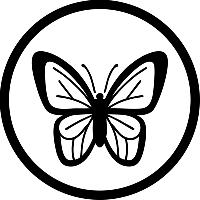5 feet
5 feet


4a
Southern Bush Honeysuckle
Butterfly Southern Bush Honeysuckle has attractive coppery-bronze-tipped dark green foliage which emerges coppery-bronze in spring. The glossy pointy leaves are highly ornamental but do not develop any appreciable fall color. It features subtle panicles of yellow trumpet-shaped flowers along the branches in early summer. The fruit is not ornamentally significant.
Butterfly Southern Bush Honeysuckle is a dense multi-stemmed deciduous shrub with a shapely form and gracefully arching branches. Its relatively coarse texture can be used to stand it apart from other landscape plants with finer foliage.
This shrub will require occasional maintenance and upkeep, and is best pruned in late winter once the threat of extreme cold has passed. It is a good choice for attracting butterflies and hummingbirds to your yard. Gardeners should be aware of the following characteristic(s) that may warrant special consideration;
Butterfly Southern Bush Honeysuckle is recommended for the following landscape applications;
- Mass Planting
- Hedges/Screening
- General Garden Use
- Naturalizing And Woodland Gardens
- Container Planting
Butterfly Southern Bush Honeysuckle will grow to be about 5 feet tall at maturity, with a spread of 5 feet. It tends to fill out right to the ground and therefore doesn't necessarily require facer plants in front, and is suitable for planting under power lines. It grows at a fast rate, and under ideal conditions can be expected to live for approximately 20 years.
This shrub does best in full sun to partial shade. It is very adaptable to both dry and moist growing conditions, but will not tolerate any standing water. It is not particular as to soil type or pH. It is somewhat tolerant of urban pollution. This is a selection of a native North American species.
Butterfly Southern Bush Honeysuckle makes a fine choice for the outdoor landscape, but it is also well-suited for use in outdoor pots and containers. Because of its height, it is often used as a 'thriller' in the 'spiller-thriller-filler' container combination; plant it near the center of the pot, surrounded by smaller plants and those that spill over the edges. Note that when grown in a container, it may not perform exactly as indicated on the tag - this is to be expected. Also note that when growing plants in outdoor containers and baskets, they may require more frequent waterings than they would in the yard or garden. Be aware that in our climate, most plants cannot be expected to survive the winter if left in containers outdoors, and this plant is no exception. Contact our store for more information on how to protect it over the winter months.
| SKU |
Container Size |
| S1240 |
#2 Container (2 Gallon) |
* Not all container sizes may be available at this time. See store for details on specific container size availability.






